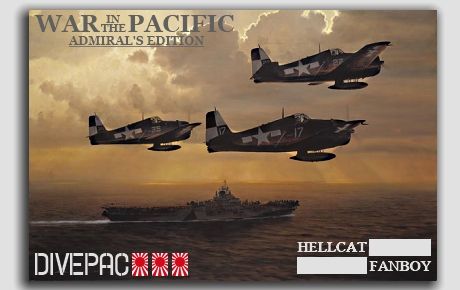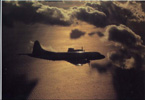Kaoru
Posts: 23
Joined: 10/25/2009
From: Redlands, CA
Status: offline

|
quote:
ORIGINAL: ChezDaJez
quote:
ORIGINAL: Mike Scholl
KAORU certainly speaks to the dreamer in all gamers..., the part that always thinks if I could just change this or that I could do better. The problem arises in the research and programming aspects. Modeling just the military aspects of the War in the Pacific is an awesome task with thousands of variables to be researched and integrated. The current game, even with all it's improvements, still falls short in a number of these areas (the ground combat system anyone?), and could benefit from years more work.
What "production system" does exist in the game is very unsophisticated and exists primarily to give the Japanese side some wriggle room. To truly bring it up to the standards of some of the game's other programming is a daunting task..., with factors including resource availability and allocation, manpower (skilled and unskilled) availability and allocation, plant remodeling and construction, design sophistication and management expertise, transportation availability and allocation, machine tools production, industrial engineering as well as scientific research, etc., all to be analized and implemented. And I fear that if it ever was the result would be to allow the Allies (with the benefit of hindsight) to be even more overwhelming than they already were.
Well said. And I think that if it were ever implemented, no one would ever be able to find a Japanese player willing to take it on!
Welcome to the game, Kaoru!
Chez
To Mike:
There are certainly areas and elements of the game that might need to take priority over what I've suggested - especially given that, as I've acceded, the current system of just relying on the data makes for a fine game that still tends to inevitably default to its historical conclusion. And if it was decided that the ground combat system was to be revamped, and the Allied production situation ignored, I'd not cry foul - one must have priorities in all things. The two aren't necessarily mutually exclusive, though.
What you outline is certainly a dream system for anyone who wanted to have a fully-operational economic and industrial simulator present inside War in the Pacific - and while I'm not going to argue against that, by any large margin, it's not my goal. Directly in the game's title is where I consider the soul of this simulation to be, for the most part - the War in the Pacific, not necessarily every social, economic and industrial factor on the home-front that drove it.
Thus far, just about everything that exists in this game exists to supplement the warfare aspect of the game - the supply network as Japan feeds your factories, which build your tanks, your ships, and your guns. The supply network for the Allies feeds and lubes your navy and your army, not the consumers back home.
All I'm suggesting is that the level of sophistication offered to Japan - or a reasonable approximation of it - be offered to the Allied player. The rest, the intricacies of skilled vs. unskilled labor, of differing resources going to differing sectors, of industrial and scientific research - as neat as it'd be to deal with that, in the right game, I'm not entirely sure War in the Pacific is the game for that. I'm open to debate on the issue, though - I won't deny that it'd be fun to learn the intricacies of that, I just question whether it'd be in the spirit of the game that WitP is.
You're running a war, after all - and while I see that ending at dictating wartime production as an omni-national Chief of Staff/Chief of the Army/Chief of the Navy (and all their international equivalents, ministerial and otherwise) - while leaving the hows, wheres and whyfors of that intricate system up to the men running it, once I provide the material - you may see it differently. And that's cool - I'd like to hear more about that, sometime.
To Chez:
Hah - you might be surprised as to what some people will put themselves through, but, I agree - a system as complicated as the one Mike outlines might be, as I mentioned to him, better-served in a class of game all its own. Though, knowing me, I'd probably play that game, too! Regardless, it's good to be here - thanks for the warm welcome!
quote:
ORIGINAL: Reg
Interesting, it appears that there is a similar thread over on the BTR forum so I will repeat what I said here.
quote:
Reg - ED-BTR Forum 25Oct09
I have had a views on this topic for quite a while as it closely parallels the WITP/AE debate.
I think that most people totally miss the point of having axis production as an in-game function. One vocal fan boy advocate even went so far as to state that having Japanese (Axis) production on map where it was vulnerable to Allied action was to "PUNISH" the Axis player.
I believe GG put production on the map to allow the Allied player to attack and gradually erode the Axis's ability to wage war. As in the real war, axis war effort can be directly affected by attacks on the factories or by the denial of resources necessary for the war effort. This is not only the cornerstone of Allied strategy but central of any analysis of the conflict!!!
The reason Allied production is fixed off map is that the Ford plant at Willow Run will produce 428 aircraft per month (Aug'44) regardless of what the Axis player does. However the Mitsubishi/Messerschmidt plant output is very dependent on the in-game actions of the Allied player. I think the ability of the Axis player to adjust their factories/economy is quite consistent with this concept and allows the player to adjust and re-balance to minimise the impact of the Allied incursions.
However, the one thing I vehemently object to is the ability of the Axis player to use this flexibility to crank up production to ahistorical levels which I believe is tantamount to an exploit of the game system. If the Axis player is on track to a decisive victory, the best he should ever be able to hope for should be to maintain the current levels (I was going to say historical levels but historically they were in a downward spiral). There should be no way possible for the Axis to be increasing output to 600% of starting figures as reported in some AARs. I suspect this is possible by the economy model ignoring real world constraints that were there for a reason (probably not good ones) but are not reflected in the game.
Edit: Reading a few more posts above, I must agree with the sediment that being able to specialise on one or two aircraft types (the best in 'game' terms) is another case of ignoring the constraints of reality for the very reasons they cite.
Just my 2c [/rant off]
I'm afraid my old Grandma told me that two wrongs do not make a right.
If you give also give the Allies the ability to deviate from history, we are only deviating further and further away from what really occurred and could have realistically ever happened. I don't want a fantasy game (Warcraft XIII - Revenge of the Kimono), I want a game about the ACTUAL War in the Pacific!!!
I believe the basic concept of a fixed historical Allied reinforcement is sound, all that is needed is just to get the outrageous exploitations of the Axis production out of the game (which really is just a case of fine tuning as opposed to a complete re-write).
It's been said a thousand times but if you really want to explore alternative history, that's what MODS are for!!! Go for your life, I play them too. Just don't force it on the rest of us as the game default.
I'm sure that I am not alone with this view.
Whoa, whoa, whoa! Slow down a second - I like that you're pitching in, and you've clearly got this very well-thought-out, but let's make sure we're clear on one thing: As I said in my initial post and most posts after it, I am not suggesting that full Allied Production be instituted as the game default.
In fact, the initial tone of my post was the suggestion that this be implemented as an alternative option, in the vein of current "December 7th Surprise / Historical First Turn" and "Stood Down China", to name a game-option and scenario-option, respectively - or even that it not be 'officially' instituted, but rather put in place (and left open to changes) merely for modders and the like (such as myself!) to tweak and mess around with.
Now that we're copacetic there, I'll deal with the rest - which isn't a rant, incidentally, you've got some good sticklers, there. I want to address the BTR/WitP issue first, though, and the problem of Willow Run: BTR (Beyond The Reich?) is, from the sounds of it, a very different game, covering the war in Europe and surrounding parts of the 'Western' world.
Even if it plays like War in the Pacific, there's a stark difference between the two theaters, and that centers around the Allied focus: I can't speak for BTR itself, but as many here know, the vast bulk of the Allied war-material and effort was focused around the war in Europe.
While both games (rightly so, in my eyes) include Axis production as a means for the Japanese player to (as Mike and others have pointed out) 'wiggle' within their historical, wartime confines, and allow the Allied player to gradually chip away at that production capacity, the distinction between the Western theater and the Pacific theater becomes very important in War in the Pacific: Because the production capacity of Ford's famed plant, even at its wartime peak, is being primarily funneled (so I've been lead to believe, at least) towards Europe, towards Germany.
This is not the production I am suggesting the Allied player be given, because so very much of it took place off-map from where War in the Pacific covers, and little of it reached the Pacific. It is the muchly-reduced industry in the American west I would focus on, and, even more importantly than that, the industry of India, of Australia, of China and the Dutch East Indies. It would be ridiculous, un-fun, and un-balancing to give the Allied player the full, ahistoric brunt of U.S. production from the get-go, or even to make that brunt available in full until the surrender of Germany.
What would be much more enjoyable, in my eyes, would be marshalling, mustering and controlling what far-more-limited production facilities were available to the Allies in the Pacific - feeding, and building, expanding, and using, those factories, not Willow Run.
Now, the more serious issue you raise: gaming the system. Already, it's very possible - a we've seen in AARs, and our own games - for a good, savvy, intelligent player to use the flexibility inherent in even the Japanese production system to crank up production to unhistoric levels.
This appears to be a very serious issue, on the surface - if production by the Axis increases too much, you can run into a scenario where they might be able to pull a victory. In a game that attempts to accurately simulate a World War II conflict, this is obviously a big no-no.
On the other hand, though, what are 'historic' levels? You say that, during World War II, Axis production levels were in a 'downward spiral' - but this is strictly untrue. Throughout the war, up until around the end of 1944 and the beginning of 1945, Germany in particular (which you are citing with BTR) ramped up their production to insane levels.
For instance: In 1939, according to Professor Wikipedia (whose accuracy is suspect, admittedly, and I would not rely on it for exactitude) Germany produced around 370 armored vehicles. Work with me, let's take that as a ballpark. In 1944, they produced nearly 19,000.
If those figures are accurate even to the nearest thousand, that would be a 2,000% rise in overall armored vehicle production in Germany - if the figures are strictly accurate, it's a rise of about 5,000%. Airplanes tell much the same story, in reduced form - you see increases of 900% in some areas for historic production levels 1939-1944, even though some airframes did drop in their rates of production starting in 1943 (for reasons I'll not speculate on, here.)
The truth of the matter is that the Axis' production ability expanded with their conquests - in Japan and Italy and Germany, alike. It wasn't enough to keep pace with the Allies, once America weighed in on the matter, no. But let's not forget that the total GDP of the Allies was only double that of the Axis, when the Axis was at its height - and half of that was the USA. That doesn't mean that, industrially, if we exclude the USA, the Axis could've no-sweat matched the economic and wartime output of the other Allies.
But it does mean that this was not such a lopsided conflict that game was immediately over for the Axis as soon as the US joined the party. I have no doubt that there was a ceiling to Axis production beyond which they could not have advanced, in Japan and Germany alike, that, even if they'd remained unmolested by the Allies, would have seen them fall short of what the U.S. could bring to the table.
Yet I also have no doubt that the Axis did not reach that before the Allied bombing campaigns began to take their toll on industry. Put in other terms: Ramping up the Axis production 600% from where it starts isn't ahistoric if it happened. The trouble is that, in the current game-model, in both BTR and War in the Pacific, the Allies have no possible way to counter this - because they're on a fixed-reinforcement schedule.
Even in light of all of the above, though, I still definitely feel that there should be limits that approximate the historical ones, on both the Allies, and the Axis. There were, definitely, limiting factors in all involved nations, that prevented them from surpassing certain levels of growth and expansion. I don't play War in the Pacific when I'm looking to play Warcraft, indeed, and I don't play Warcraft when I'm looking to play War in the Pacific.
I just don't know whether 'what historically happened' is quite as stringent a bottleneck as you make it out to be - especially given that, as mentioned, that 'plant at Willow Run' isn't making Dauntlesses and Hellcats.
I don't think there's a vast and terrible wrongness with the current, fixed-reinforcement scheme, myself. I just think a game with more variety of the sort I propose, could be even more fun than War in the Pacific already is.
Do I still get to call this my two cents when it's this large? I suppose! So there's my take on that.
~Kaoru
P.S.:
quote:
ORIGINAL: ChezDaJez
I also share your view. The Axis player should not be free to produce unlimited numbers of aircraft and I think you will find that the economic simulation contained within AE will severely limit the ability of the Japanese player to do so. Changes must be made slowly or the Japanese player will cause more damage to his economy than any allied 4E ever will.
Chez
The Axis player shouldn't, and the Allied player shouldn't. I'm behind you 100%, on that. But even using, say, this site (Grim Economic Realities) as a basis, you can see that Japan increased her wartime production of planes over 500% from 1939-1944 - and that's not even counting from 1937, when Japan initially entered the war against China.
Besides, the idea of a limiting economic simulation seems to fit the other Allies well enough, as well. Japan shouldn't be free to produce unlimited numbers of planes, and nor should the Allies.
But both of them sure as heck did pump out a staggering number.
< Message edited by Kaoru -- 10/26/2009 10:58:58 AM >
_____________________________
|
 Printable Version
Printable Version






 ) after Patch 2 hits and while you're plotting out Patch 3. Or for that far-off beast, War In The Pacific 2. (Assuming sales from AE have been sufficient to justify that!) Of course, I can't promise not to sneakily push for it, any chance I get.
) after Patch 2 hits and while you're plotting out Patch 3. Or for that far-off beast, War In The Pacific 2. (Assuming sales from AE have been sufficient to justify that!) Of course, I can't promise not to sneakily push for it, any chance I get. 





 ), I'd also say the additional elements of challenge, risk, and danger associated with taking the liberties you've laid out with Allied production, would add to the fun factor of the game. Especially if it was just an alternative, and not the only way!
), I'd also say the additional elements of challenge, risk, and danger associated with taking the liberties you've laid out with Allied production, would add to the fun factor of the game. Especially if it was just an alternative, and not the only way! 






 New Messages
New Messages No New Messages
No New Messages Hot Topic w/ New Messages
Hot Topic w/ New Messages Hot Topic w/o New Messages
Hot Topic w/o New Messages Locked w/ New Messages
Locked w/ New Messages Locked w/o New Messages
Locked w/o New Messages Post New Thread
Post New Thread